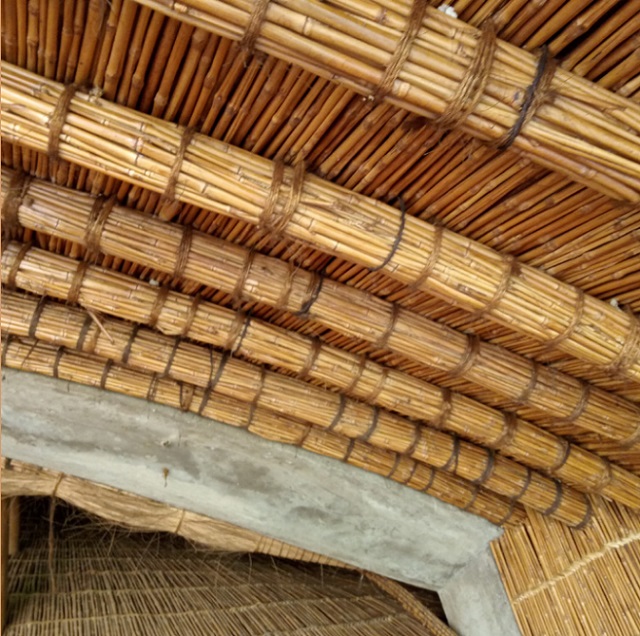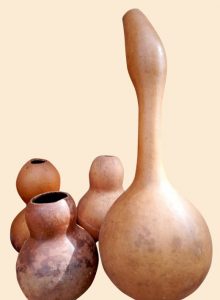
A site of Buganda’s rich cultural heritage reflected in the diverse material culture
| THE INDEPENDENT | A top a sprawling hill located in Nasanna- Wakiso district, in a small village called Katooke, about 12km from Kampala, is the Wamala tombs. This cultural site is burial ground of Buganda’s 29thKing, Ssekabaka Ssuuna ll. Kabaka Ssuuna reigned on the throne between 1832-1856 after the death of his father Ssekabaka Kamanya. It was him (Kabaka Ssuuna ll) who entrained the first foreigners- Arab traders- to Buganda in the mid 1840s. On the contrary, he earned himself an identity as one of the most despotic and tyrannical rulers of the Kingdom because of the many execution orders he made to his subjects in a place that later came to be named Bwayise (Bwaise), located below the hill. His murderous trait did not spare even his many siblings who he killed in a bitter struggle for power!
 The shrine where he’s buried is one of the two tombs – the other being Kasubi tombs- the former kings of Buganda are laid to rest. The large and towering hut denotes the immense majesty and honour of the monarch. It is located almost within the centre of the hill at the exact spot where his court stood. Kabaka Ssuuna was the last king of Buganda to be buried in his Palace. The shrine’s grass thatched exterior gives an impression of unique architectural design. Traditionally, in Buganda the residence of the king took on a distinct fashion from that of his subjects (Bakoopi). This was intended to create a disparity between the monarch and his subjects. The entrance and exterior of the shrine has a delicate handiwork of reeds horizontally and vertically aligned to create a pattern evocative of a neatly embroidered mat. Similarly, the dome of the shelter is adorned with a series of ring- shaped reeds that ascend from top to bottom. Such artistic approach suggest the representational norm of artifacts in Buganda. The reed rings evoke the 54 clans of Buganda that exist as one to create Buganda. This is inspired by the Buganda proverb: Kamu Kamu gwe Muganda (Translated in English as One by one makes a buddle).
The shrine where he’s buried is one of the two tombs – the other being Kasubi tombs- the former kings of Buganda are laid to rest. The large and towering hut denotes the immense majesty and honour of the monarch. It is located almost within the centre of the hill at the exact spot where his court stood. Kabaka Ssuuna was the last king of Buganda to be buried in his Palace. The shrine’s grass thatched exterior gives an impression of unique architectural design. Traditionally, in Buganda the residence of the king took on a distinct fashion from that of his subjects (Bakoopi). This was intended to create a disparity between the monarch and his subjects. The entrance and exterior of the shrine has a delicate handiwork of reeds horizontally and vertically aligned to create a pattern evocative of a neatly embroidered mat. Similarly, the dome of the shelter is adorned with a series of ring- shaped reeds that ascend from top to bottom. Such artistic approach suggest the representational norm of artifacts in Buganda. The reed rings evoke the 54 clans of Buganda that exist as one to create Buganda. This is inspired by the Buganda proverb: Kamu Kamu gwe Muganda (Translated in English as One by one makes a buddle).
Inside is generally dark and everything around lies still as if at once held in a capsule of pre historical time. The most vital object in this space- the remains of King Ssuuna ll- is tucked away into an abysmal darkness created by a large curtain of barkcloth. It incidentally also marks the boundary where visitors should stop. Culturally, it is believed that the Kabaka does not die, but disappears into a large forest where he embarks on unending journey. The area covered with a curtain is a dramatic display o the eternal forest were the King is still journeying. In the foreground of this symbolic presentation, are the wide-ranging spears in different sizes and shapes. Next to the spears is one of the shields used in combat. These are traced back to the era of Kabaka Ssuuna ll and are an evidence to his warrior-like personality. The floor is covered with objects evocative of Buganda’s diverse material culture that include mats, animal skins, baskets, drums (male and female) and gourds (Endenku and Engonda).These objects were routinely used at the palace and their display here, goes beyond domestic use. They symbolically signify the belief in the spiritual world which is a central theme at the tombs.
 There’re fireplaces at least in every corner of this space. These still suggest the idea of connecting to the spiritual world evident with several sacrifices made to the different spiritual deities by the king’s subjects. Images of both men and women smoking the traditional pipe are common here. They perform this ritual in between quiet petitions to the gods to intercede for them to the superior deity: Katonda (God). There is also a fireplace within the shrine that never died out that is a representation of the eternal life of the monarch.
There’re fireplaces at least in every corner of this space. These still suggest the idea of connecting to the spiritual world evident with several sacrifices made to the different spiritual deities by the king’s subjects. Images of both men and women smoking the traditional pipe are common here. They perform this ritual in between quiet petitions to the gods to intercede for them to the superior deity: Katonda (God). There is also a fireplace within the shrine that never died out that is a representation of the eternal life of the monarch.
The Wamala tombs are an exciting destination to interact with Buganda’s rich cultural heritage. This is visible through the rich material culture at the site that include the architecture, everyday objects and the symbolism to the spiritual world. Such, demonstrate the creative ingenuity that existed in pre- historical communities across Africa hence, challenging the common stereotype that African societies were backward and primitive.
****
 The Independent Uganda: You get the Truth we Pay the Price
The Independent Uganda: You get the Truth we Pay the Price



